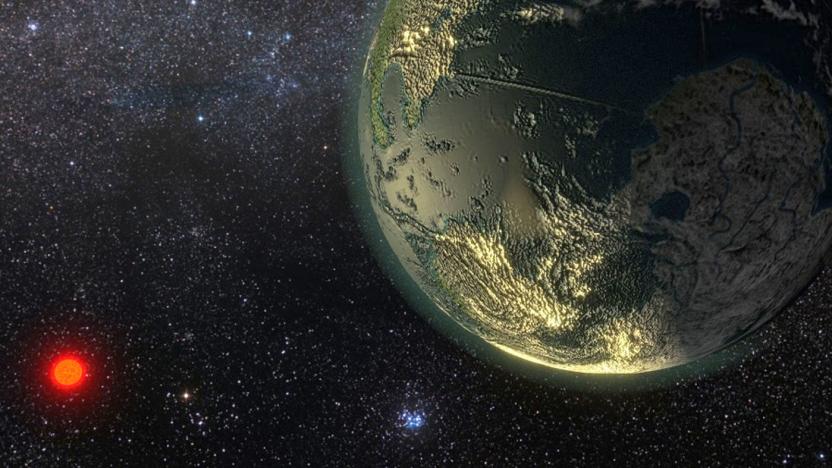keck
Latest

Scientists release huge set of exoplanet-detecting observations
If you've always wanted to find exoplanets, now's your chance to help. A team of scientists from MIT, Carnegie Mellon and other universities have released a huge dataset containing 61,000 individual measurements of more than 1,600 nearby stars. All the measurements came from two decades of observations made by the HiRES spectrometer, which is mounted on a 33-foot telescope at the Keck Observatory in Hawaii, using a technique called radial velocity method. Simply put, the scientists used the tool to detect the tiny wobble stars make in response to the gravity of an orbiting planet. Thus, the dataset contains the date, the star's velocity, the error on that velocity and measurements of its activity during that observation.

Scientists capture birth of new planet on camera, mother and child doing just fine
After all the pushing, squeezing and screaming, the universe has finally given birth to a new planet, in an eruption that two scientists managed to capture on film. The newborn pile of planetary pudge, named LkCa 15 b, was discovered by Drs. Michael Ireland and Adam Kraus, who, over the course of 12 months, successfully documented the event using Keck telescopes and a technique called aperture mask interferometry. Their findings, published in Astrophysical Journal describe a Jupiter-like gaseous planet that likely began forming some 50,000 to 100,000 years ago. Located about 450 light years from Earth, it's also the youngest planet ever observed, having dethroned the previous record-holder, which was about five times older. According to Ireland and Kraus, the LkCa 15 b is still being formed out of a circle of dust and gas (pictured above) surrounding a 2-million-year-old star. By observing a "young gas giant in the process of formation," the researchers hope to find answers to fundamental questions that have long eluded them. "These very basic questions of when and where are best answered when you can actually see the planet forming, as the process is happening right now," Kraus explained to the AP. Head past the break to see an artist's rendering of the newborn, and if you get the chance, be sure to send flowers.

